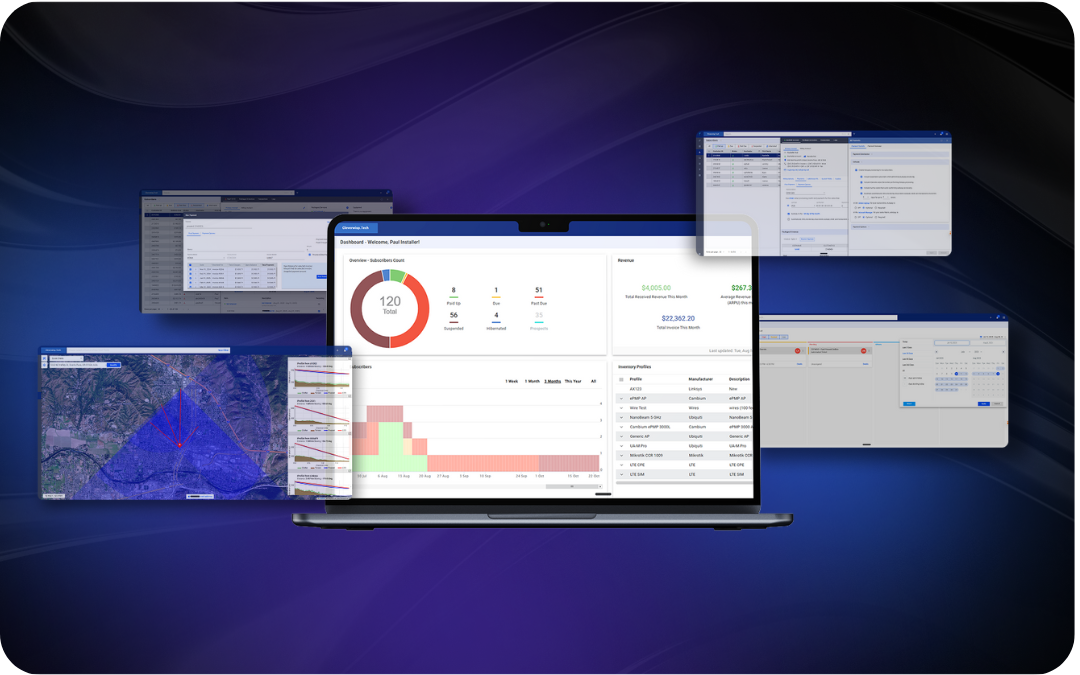Can prepaid billing help you outlast economic downturns?
You feel it, don’t you? Life shifted in March 2020. In homes across the country, professionals and parents scrambled to upgrade internet services to accommodate working and schooling from home. While many transitioned to home offices, furloughs and lay-offs created millions of new jobless. On April 16, 2020, the U.S. unemployment rate was estimated at 22 million[1], up from an estimated 5.8 million unemployed in February 2020[2].
Although unemployment is decreasing, with approximately 9.5 million unemployed in June 2021[3], it’s time for smart business leaders to examine their business practices to stay alive and thrive during future crises, while keeping loyal subscribers connected to their internet service in the long run.
According to business guru, Jay Abraham, a slow or crisis economy offers new opportunities. “When you move beyond worry and fear, you’ll discover that areas of growth are actually more plentiful than they are during boom times,” he said.
One area to examine to remain healthy is the best practice of prepaid billing.
Halt Opportunities for Unpaid Internet
The simplest way to describe a prepaid model is the customer pays, then they receive the service. In other words, the subscriber makes a deposit on internet service for the month, and each day, a portion of that deposit is applied to the service.
Because subscribers are paying only one month’s fee, there’s still a low barrier to entry. New subscribers will only have to come up with one month’s subscription fee and the one-time install fee before service is activated.

Reduce your exposure to subscriber default..
Reduce Risk with Prepaid Billing
Subscribers who go past due after a history of on-time payments may not be a big risk for default. While most aren’t, there is a risk. After all, nearly one million people walk away from their debt every year.
According to the United States Courts, between 2006 and 2017, more than 12 million Americans filed for bankruptcy [4]. As they deferred or wiped out their debt, they left creditors empty-handed. What’s worse is that the more grace you give, the more incentive a debtor has to walk away. It’s a slippery slope that leaves you at the bottom and your competitor with new revenue. Worse still, that subscriber probably won’t come back even if you forgive the debt. Who wants to be in that position?
If your billing practice allows even a short five- to a ten-day grace period, you are creating a scenario that still allows subscribers to consume your internet service on credit, which is a small step down that slippery slope. Do away with or minimize grace periods and let your automated systems shut off the accounts earlier rather than later to significantly reduce late payers, attrition and the mutually painful, unprofitable collection process.
In good and bad economic times, train your subscribers to keep their accounts current. Prepaid billing with no grace period is a best practice.
Although these policies support your WISP’s profitability, so is helping subscribers who have been good customers and who will be again. If good customers are having a tough time paying, offer lower-cost packages and tips on how they can get adequate service at a lower speed to maintain that relationship so they can still pay-as-they-go.
Reduce Late Payments
Auto-payments are another way to ensure subscribers pay on time. But, other issues can surface, namely, customers who forget to update their billing method when credit cards expire.
Imagine the scene — an angry subscriber calls to demand to know why there’s no internet service. After a staff member accesses their account and explains their credit card has expired and updates the account, the subscriber’s anger lingers as if you were at fault. Add an inevitable or inadvertent service issue or other complaint and you’ve got an angry client ready to cancel their service.
The value of customer retention may be higher than you realize — a mere 5% increase in customer retention rates can account for 25% to 95% higher revenue and significantly higher profit. [5]
Despite the importance of this retention activity, your staff members have better things to do than soothe disgruntled subscribers. A well-run WISP that proactively calls subscribers whose credit cards are about to expire may prevent that poor customer experience event, but still bears that costly overhead of proactive, direct contact.

Automate and reduce late payments and the time to fix them.
What if you could automatically update expiration dates, name changes, and credit card numbers that have been replaced due to loss or theft without inbound or outbound phone calls? How much would that save? It improves the customer experience, supports long-term retention and ensures continuous recurring billing.
If we look at the estimated increase in revenue applied across the lifetime value of your subscriber base, when retention is increased by just 5%, the number is staggering. If you have 1000 subscribers, the average monthly fee is $75 and you estimate a subscriber’s lifetime value at $4,500 (5 years), according to the retention formula, the increase in each subscriber’s lifetime value is $1,125 – for all 500 subscribers, that’s an increase of over $100,000 in lifetime value.
But in reality, that retention compounds over time. Fifty subscribers for every thousand retained per year is 250 subscribers over five years. How much more is your WISP worth with those added subscribers when you sell it?
The Account Updater is an automated feature that can be easily enabled with Visp billing and automation services. If you’re reviewing your billing practices to protect your WISP’s financial health in up and down markets, look for tools like this that drive your success.
It’s not always clear which direction to take while navigating rougher terrain. These are the times to ask questions in your community, share tips that have helped you and stay connected with others on WISP Talk, Everything WISP and WISPA Group. If you want to know more about Account Updater, call 541.955.6900 You will get through this. #WISPStrong
References:
- Long, H.; U.S. now has 22 million unemployed, wiping out a decade of job gains; April 2020; Washington Post online: https://www.washingtonpost.com/business/2020/04/16/unemployment-claims-coronavirus/
- Bureau of Labor Statistics TED: The Economics Daily, 19.2% of the unemployed have been jobless for 27 weeks or more in February 2020, March 2020, online: https://www.bls.gov/opub/ted/2020/19-point-2-percent-of-the-unemployed-had-been-jobless-for-27-weeks-or-more-in-february-2020.htm
- U.S. Bureau of Labor Statistics, July 2021, The Employment Situation – June 2021, online: https://www.bls.gov/news.release/pdf/empsit.pdf :
- Just the Facts: U.S. Bankruptcy Filings, 2006 – 2017; March 2018, online: https://www.uscourts.gov/news/2018/03/07/just-facts-consumer-bankruptcy-filings-2006-2017
- Reichheld, F., Schefter, P.; The Economics of E-Loyalty; 2000; Harvard Business School Working Knowledge, online: https://hbswk.hbs.edu/archive/the-economics-of-e-loyalty
Other resources:
Abraham, J; Three Reasons to Love a Bad Economy; January 2014, online: https://www.businessknowhow.com/money/loverecession.htm










